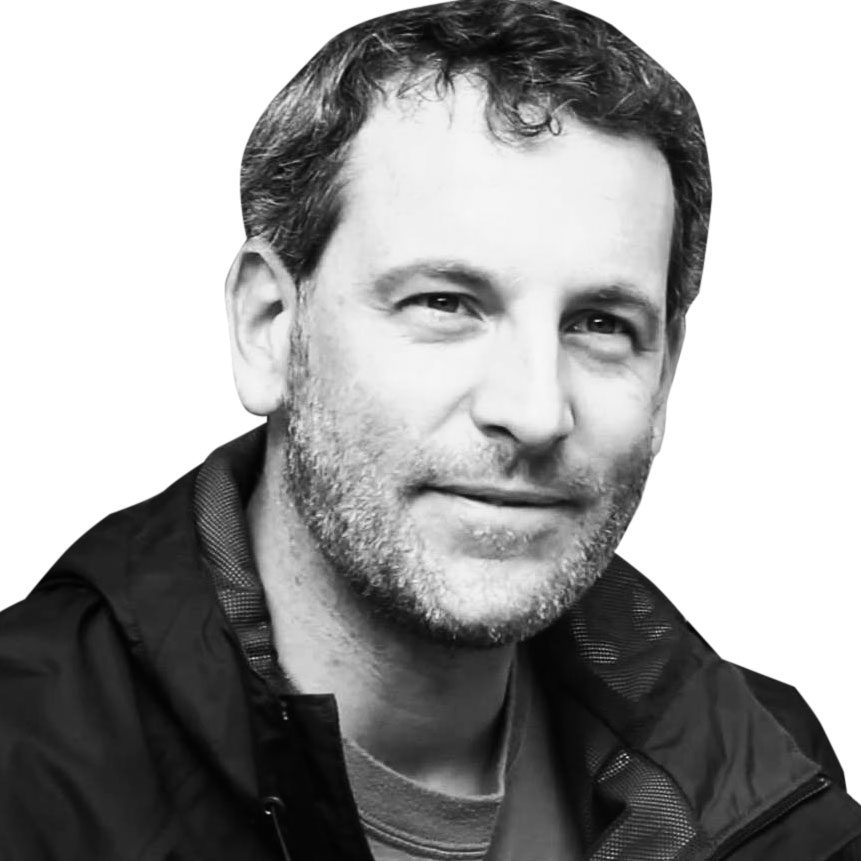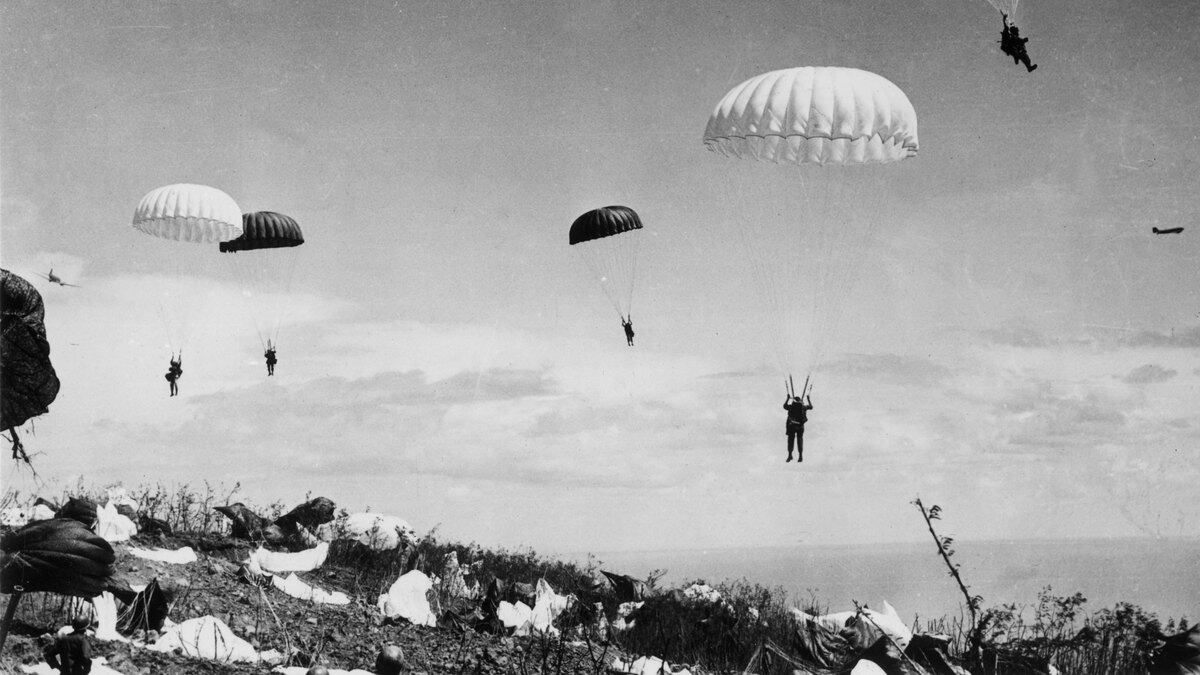In late December 1941, General Douglas MacArthur, caught off guard by the Japanese invasion of the Philippines, is forced to retreat to Corregidor, a jagged, rocky island fortress at the mouth of Manila Bay. Months later, under orders from the president, the general is whisked away in the dark of night, leaving his troops to their fate. It is a bitter pill and the humiliation of Corregidor haunts American forces until the winter of 1945.
As MacArthur returns to the Philippines, his eyes are firmly fixed on Corregidor. To take back the island, he calls on the 503rd Parachute Infantry Regiment, a highly trained veteran airborne unit. Their mission is to jump onto the island—hemmed in by sheer cliffs, pockmarked by bomb craters, bristling with deadly spiky broken tree trunks—and wrest it from some 6,700 Japanese defenders who await, fully armed and ready to fight to the death.
In this exclusive excerpt, we meet Pvt. Anthony Lopez a day after landing on Corregidor in February 1945. He is perched on the top edge of a Japanese controlled ravine searching for paratroopers who missed the drop zone. When Lopez spots a wounded American soldier, he and a unit mate climb down into the ravine to mount a rescue.
Read the whole story in Rock Force.
Pfc. Anthony Lopez woke up covered in flies.
He shook them off and created a dust cloud. Dust covered everything. Ponchos. Packs. Weapons. Lopez looked around at his unit mates. After one day, the paratroopers’ fatigues were filthy and caked with salt rings. But the flies were new. He hadn’t noticed them when he first arrived on Corregidor, but now they covered everything. A sour smell hung in the air. Lopez knew it from past battlefields. Rotting bodies of the dead from the day before were baking in the sun. The flies arrived with the smell.
Lopez shooed the black swarm away with his hand. For a few seconds, the flies disappeared. Then they were back, crawling on his arms and face. He shooed them again and opened a tin of biscuits.
A brief reprieve.
Then, like mini kamikazes, they swarmed again, crawling on his hand and on his food. He shook them off and choked down the dry biscuit in a few bites, washing it all down with a swallow of water.
Lopez sloshed his canteen around, gauging how much water he had left. Everyone was rationing their water. They’d jumped with two canteens, but now most of the guys were down to their last couple of swallows. Everyone was thirsty and the water resupply still hadn’t shown up because the Japanese blockaded the road to the beachhead. Water was dropped that morning in the resupply, but it hadn’t made it out to Lopez’s unit. Some of the men found some stagnant water in the bottom of the broken water tanks on Topside, but Lopez didn’t drink it. He’d wait for the resupply.
Lt. Ed Flash, Lopez’s platoon leader, was near a cooking fire having breakfast when a guard started shooting.
“Hey, you guys, come look at this!” someone yelled. “You won’t believe your eyes.”
Flash and the others looked up. Coming down the road was a sporty red 1938 Ford roadster. None of the men knew it, but the car had been brought to Corregidor by a U.S. officer in the years before the surrender. Now this most American of automobiles was being driven down the road with a Japanese marine behind the wheel. Two men were beside him, and three more passengers huddled in the back. Other Japanese were running alongside, trying to grab on and jump in. They were making a mad dash off Topside to the relative safety behind their own lines. The paratroopers were mesmerized. They hadn’t seen an American car in years, much less a sporty red one crammed with Japanese marines. It looked like a clown car crammed full of elbows and knees.
But there was nothing funny about it.
Before anyone reacted, a long burst from a .50 caliber machine gun near Topside’s parade ground shook them out of their stupor. Bullets smashed into the side of the roadster, punching massive holes through the thin steel. The roadster skidded off the road and burst into flames. The paratroopers, now out of their daze, shouldered their weapons and opened fire as the Japanese marines piled out. The fusillade cut down the survivors before they could escape into the brush.
The incident affirmed what the paratroopers knew: The Japanese were hiding in the caves in the ravines running from Topside down to the water. At some point, they knew, the Japanese would come for the high ground.
After breakfast, Lopez and his squad took up a position at the edge of Cheney Ravine. All morning they’d glimpsed flashes of tan uniforms in the ravine below—Japanese marines running across from cave to cave. Lopez figured the Japanese radios were knocked out because there was no other reason for them to be running one or two guys back and forth unless they were delivering messages.
After watching a few cross, he shouldered his BAR.
“Don’t let them across,” Lopez told his squad. “Knock them down. Knock them down.”
When the next runner appeared, the Americans opened fire. The first rounds hit nearby, and the runner picked up the pace. He zigzagged across as rounds exploded all around him. He was about to get across the mouth of the ravine when he finally crumpled to the ground in a hail of fire.
They cut the next runner down too.
The echo of the last shot was fading when someone spotted another runner.
“There’s one, there’s one,” called one of Lopez’s squad mates.
Lopez scanned the ravine and spotted a man waving his arms. He was wearing an American uniform. The paratroopers were about to open fire when Lopez shouted.
“Hold it, hold it,” Lopez said. “That’s not a Jap. He’s got one of our uniforms on.”
“That’s a Jap,” one of Lopez’s unit mates said. “They’re just trying to fool us.”
The man in the ravine took off his helmet and Lopez spotted blond hair.
“That’s not a Jap,” he said. “That’s one of our guys.”
There was no way they were going to leave him to the Japanese. Earlier that morning, a patrol near Battery Wheeler found a dead paratrooper still in his harness, the body horribly mutilated with bayonets. Lopez called Flash over to his position. The man was likely wounded, or he would have tried to make it up to Topside. Flash took one look and turned to his platoon.
“You guys cover us,” he said. “We’ll go get him.”
It was Staff Sgt. Leonard LeDoux. He was one of a number of paratroopers from E Company who had fallen short of the parade field. Flash and Pfc. Angelos Kambakumis took off down the hill. Lopez watched them half run and half slide down. Flash and Kambakumis didn’t take weapons or a litter.
How the hell are they going to carry the guy? Lopez thought. Two guys can’t carry a wounded guy up that rocky ridge.
Flash and Kambakumis weren’t halfway down when Lopez heard a burst of gunfire and both paratroopers went down. Lopez and the others fired back, covering Flash and Kambakumis as they scrambled back into the brush. Lopez was anxiously watching the pair pick their way up the path to the top of the ravine. As they broke out of the brush, Kambakumis was holding Flash’s left arm. Kambakumis had a big crease on the top of his head where a Japanese bullet had taken his cap off.
Flash didn’t stop and headed straight toward the aid station. Lopez watched Flash walk off. We can’t leave the guy down there, he thought. He turned to his friend Pfc. Bob O’Connell.
“O’Connell, do you want to go with me?”
O’Connell didn’t hesitate.
“Yeah, I’ll go with you,” O’Connell said. “We’ve got to get him out of there.”
Lopez scanned the area. He wasn’t going to make the same mistake as Flash.
“We have to have something to carry him on,” Lopez said.
Lopez and O’Connell dashed back to the noncommissioned officers’ quarters and tore a bedspring off the wall.
“We’re not armed, you guys cover us,” Lopez said to the squad as he headed into the ravine.
Flash passed through Calhoun’s perimeter cradling his arm.
“What are you doing here?” Calhoun asked as his friend approached.
“I got shot.” Flash showed Calhoun two holes in his left fatigue sleeve just above the elbow. He pulled up his sleeve and Calhoun saw a hole in his arm three inches above the elbow. The exit wound was on the backside of his arm.
“Got hit trying to drag LeDoux out of Cheney Ravine,” Flash said.
The sound of American machine guns rattled in the distance. There was a firefight near Cheney Ravine as Lopez and O’Connell made their way down into it, so Calhoun made Flash wait at his position until things quieted down.
Sitting in the crater outside 28-D, Flash closed his fingers into a fist.
“See, I can clench my fist but I can’t spread my fingers,” he said.
When the shooting stopped, Flash got to his feet and walked across the parade field toward the aid station. Calhoun watched him and took solace that at least he could still walk on his own.
A little later, Captain Bradford came over to 28-D.
“How long will Ed be gone?” Calhoun asked.
Bradford shook his head. “Ed won’t be back,” he said. “That bullet severed the radial nerve. Ed is facing several operations and at least a year in the hospital in the States.”
Another officer gone from F Company. Red LaVanchure, the company executive officer, was in the aid station too with severely sprained ankles. The company had three officers left: Bailey, Calhoun, and Second Lt. Clinton D. “Sleepy” Miller, the mortar platoon commander.
LeDoux was about 150 yards down into the ravine. Lopez and O’Connell, lugging the bedspring, slid down the steep cliff face and into the brush, slowly working their way toward their wounded comrade. When they approached the spot where Flash had been hit, they dashed across quickly to avoid any enemy fire.
When they reached him, LeDoux was lying in the brush barely conscious. Lopez noticed he was hit and couldn’t stand. It must have taken the last of his energy when he signaled for help.
“We’re going to get you out of here, buddy,” Lopez said. “You’re going to be all right. You’re going to be all right.”
O’Connell and Lopez helped LeDoux onto the bedspring. Lopez looked back up the hill, envisioning the route to safety. The Japanese were farther down the ravine. He couldn’t see them, but knew they had clear fields of fire on the only path leading down from Topside. Lopez knew they’d be exposed on the trail, just like Flash and Kambakumis had been, but then he spotted a cluster of rocks to the left of the opening about twenty yards above them.
“When we get to the opening where the lieutenant and Kambakumis were hit,” Lopez said, “go like hell because they’re going to pepper us. When you get to the opening go to your left, where the high rocks are, and they won’t hit us there.”
O’Connell shook his head. “OK,” he said.
They stood and picked up the bedspring stretcher. With O’Connell in the lead, the pair scurried through the brush. Just before they reached the opening, O’Connell hesitated.
“OK,” O’Connell said, “I’m going to go up.”
O’Connell took one step into the opening and the Japanese machine gun fired. Bullets ricocheted off the rocks and kicked up the dirt. Lopez felt something bite into his left hip and burn. Seconds later, a bullet hit O’Connell in the back of the thigh.
“I’m hit,” O’Connell said, crumpling to one knee.
Bullets continued to rain around them. Lopez saw LeDoux twitch on the stretcher as bullets hit him. Adrenaline shot through Lopez’s body. They needed to move or die.
“You got to go,” Lopez shouted to O’Connell, pushing the bedspring forward. “Go, you can’t stop here now. You can’t stop here.”
O’Connell got the same jolt of fear. He jumped up and kept digging into the ground with one leg and pulling up the stretcher. Lopez pushed from the back as O’Connell finally made it to the high rocks. Under cover, they collapsed.
Soon, they heard their platoon mates coming down the hill.
Both men could hardly walk.
A medic met Lopez at the top of the ravine. He wrapped Lopez’s hip with two white pads and sprinkled some sulfa powder over the wound to ward off infection.
“Yeah, you got nicked pretty good,” the medic said.
Looking at their injuries, the medic joked the same bullet took them out. It went through Lopez’s hip and ended up in O’Connell’s calf.
Lopez looked at O’Connell.
“Man, after that I’ll call you my blood brother,” he said.
O’Connell, who couldn’t walk, was helped to the aid station with LeDoux. But LeDoux wouldn’t make it to the aid station. He died on the way.
Lopez stayed with the platoon. He shook off his wound and fell in line as his squad moved down into the ravine to check on some tunnels.
The tunnels ran under the green hills and each opening was a possible exit point for the Japanese defenders. The paratroopers checked each opening and then, about three hours later, returned to their position overlooking Cheney Ravine. By then, Lopez couldn’t walk. He reached the top of the ravine and slumped down in the grass. He called over the medic.
“Take a look. It doesn’t feel too good.”
The medic opened up Lopez’s pants to look at the wound. It was red and swollen.
“You’ve got blood poisoning,” he said. “You’d better get to the aid station. I can’t do nothing for that.”
Lopez got to his feet. He was in a daze, focused on just putting the next foot forward. He saw the aid station up ahead, and then nothing.
Excerpted from ROCK FORCE: The American Paratroopers Who Took Back Corregidor and Exacted MacArthur’s Revenge on Japan by Kevin Maurer, with permission from Dutton, an imprint of The Penguin Publishing Group, a division of Penguin Random House, LLC. Copyright © 2020 by Kevin Maurer.








